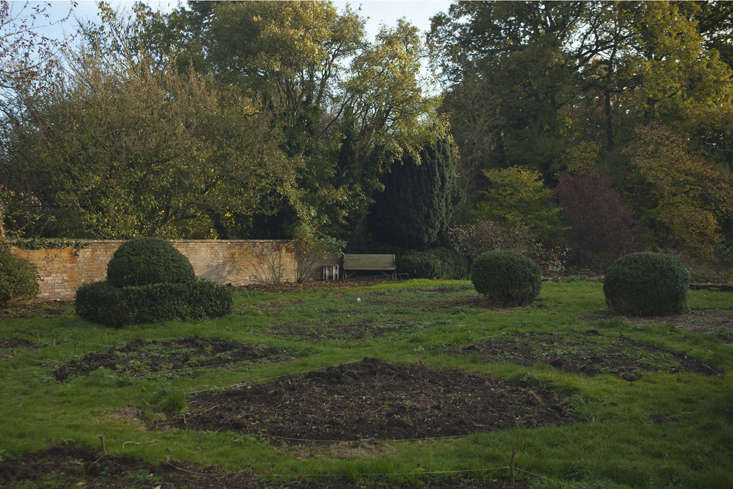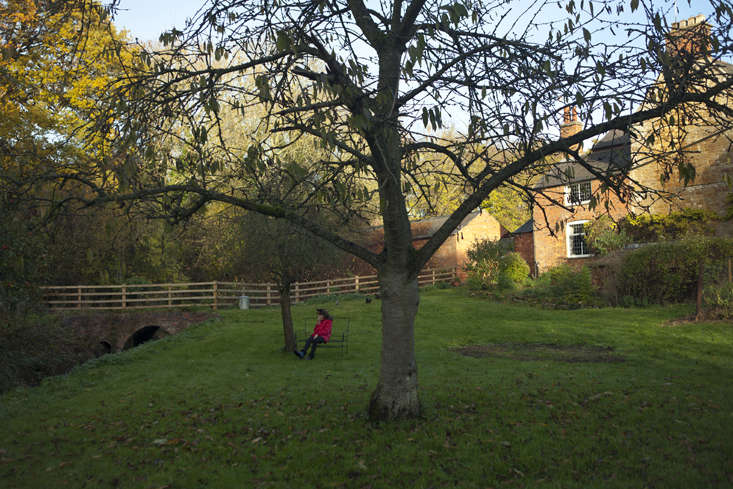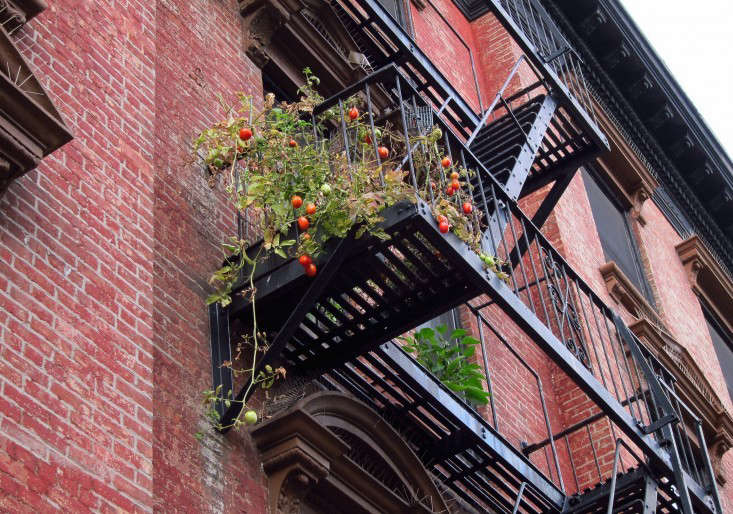When I first visited The Wilderness last summer, my friends David and Annabelle led the way, with a big stick. I was glad I wore trousers. Both stick and trousers were necessary because of the barely penetrable thickets of bramble and nettle.
Apart from the overgrown parterre by the front of the house, it was difficult to get a sense of order in this historic garden created by the influential designer Nancy Lancaster in the first half of the twentieth century. Ever since the place had been given the name of The Wilderness, it had never, until recently, been an actual wilderness. It was designed, in rustic fashion, as a modest country garden.
Annabelle and David had taken the neglected house and garden on a repair lease from Kelmarsh Hall. Their task: to take The Wilderness back, referencing the ideas that Virginia-native Nancy Lancaster had, of what an English wilderness might be.
Because Annabelle is such a doer, by autumn the restoration was well underway:
Photography by Jim Powell for Gardenista.
Above: The house looks out over a strict plan of eight island beds, bordered by walls that run down from either side of the house, enclosing the space. Beyond the parterre is a wilderness of grass and trees. A photo from the 1930s shows that this grassy area down the steps really was fairly wild, with long grass.
Above: In the wilderness of grass and trees is an orchard, including this tall and ancient pear tree that provides the family with shelter to eat under in summer. It is traditional to keep grass long in an orchard, but this is also a garden that people roam around in, instead of mainly looking at it from an upstairs window.
The orchard is now most definitely a lawn, which creates its own mowing headaches. For instance: what to do with all the trees? She wants to cut islands around them. I think that that would be all right, as long as she doesn’t then feel the need to decorate them by planting them as little necklaces. In the role of occasional helper and friend with opinions, I’d be inclined to go with the long grass, mowing paths through, with an empty tree-less lawn to the south of the parterre.
Above: When the parterre was designed in the 1920s, it was furnished with four crabapple trees at each corner. They too were topiarized, with mushroom domes. Dotted about with miniature rose trees (i.e. roses grown as standards) the look was very mannered. Now that they are gone, the view across the parterre toward the naturally-grown trees around the garden perimeter is more clear. The beauty of the trees can now be emphasized; the landscape can be sculpted.
Above: The garden layout photographed earlier this autumn, before the green leaves began to turn.
The walls around the parterre are a bonus, as shelter but also for their beauty. They deserve to be seen and not smothered. A small apple tree dangles half of its fruit over the wall on the right and my friend the gardener Phylip Statner has suggested adding to this idea, planting trees on the outside of the wall on either side that will enrich the scene with blossom and fruit, without taking up space inside the garden.
Above: The edge of the lawn just down the steps from the parterre is planted with large park trees such as this oak, supplemented with smaller hazel and wild plum. Oak leaves are slow to turn color and visually, autumn could begin earlier by sending Boston creeper up the trunks, suggests Phylip, for a streak of red.
Species roses planted around the perimeter would be an interesting way of continuing the rose obsession from the parterre to the wilder parts of the garden. Allowed to grow more freely and loosely, they often have wonderful hips like Rosa moyesii ‘Geranium’ (its scarlet hips are shaped like oval flagons).
Above: On the edges, where the garden fades into woodland, trees with berries would catch the sideways autumn light. There could be yellow and orange from sorbus, neon pink and red from spindle berry, and orange-pink leaves of cherry or preternatural red of Japanese maple.
For a selection of bauble-like berries, see Gardening 101: Sorbus.
Above: A cherry grows among the apples in the orchard. Its leaves are rather ordinary; when choosing cherries it’s essential to think about blossom, fruit and autumn foliage.
Above: The wonderful bones of an oak prepare to become a focus for winter, hardly disturbed by the trampoline below.
See the earlier installments of this series:
- Rehab Diary, Part 1: Nancy Lancaster’s Garden at Wilderness House.
- Rehab Diary, Part 2: Rescuing Nancy Lancaster’s Garden at Wilderness House.
- Rehab Diary, Part 3: Uncovering the Past in Nancy Lancaster’s Garden at Wilderness House.





















Have a Question or Comment About This Post?
Join the conversation (0)